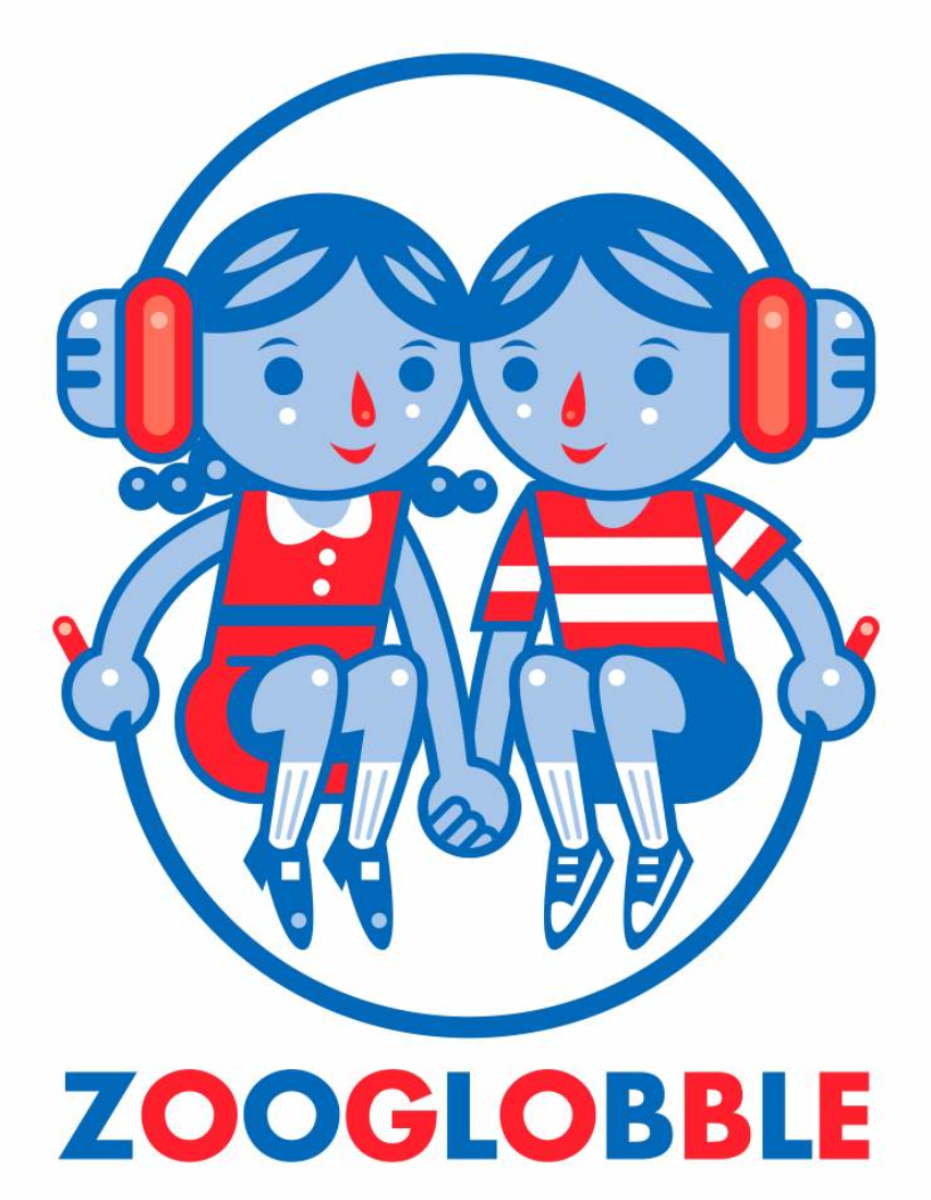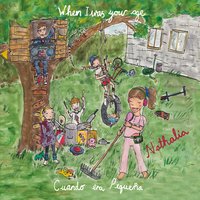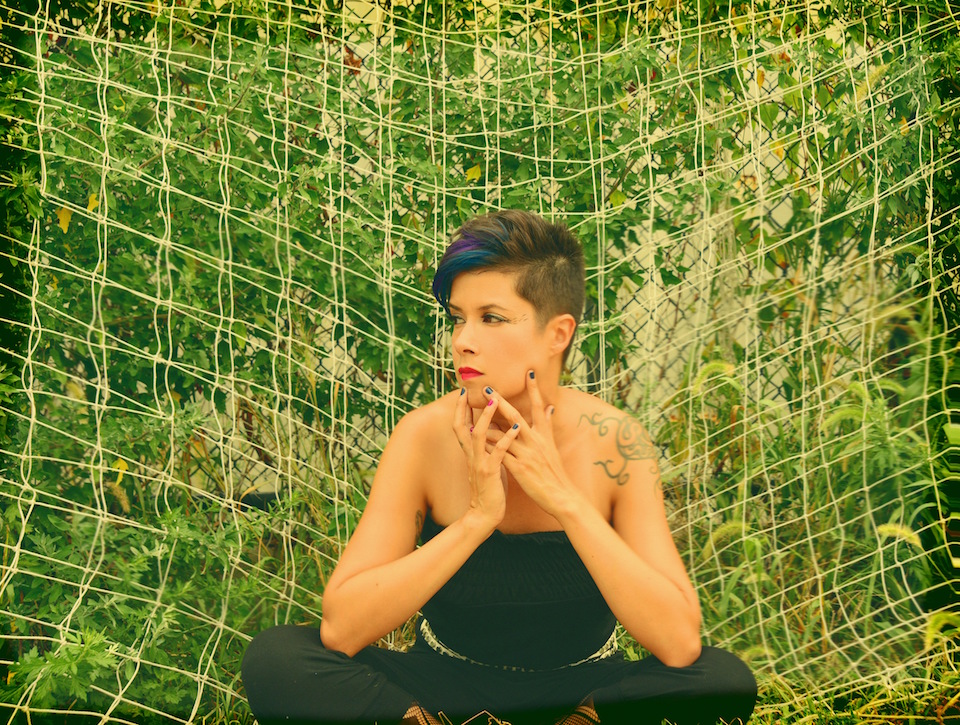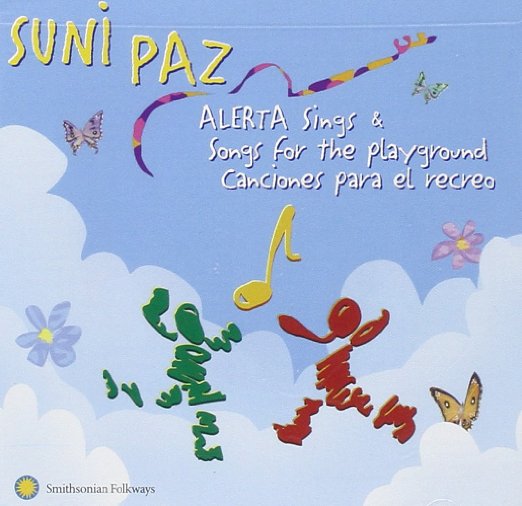While the flood of kids music designed to teach kids a foreign language has thankfully slowed down somewhat (the results were usually very dry, musically-speaking), what's left over is generally of higher quality. I wanted to highlight ever so briefly some recent Spanish-language (or mostly Spanish-language) albums for kids. I've even thrown in a Portuguese-language album for good measure. Whether any of these would sneak into my 2015 list of ten great Spanish-language kids music albums, I'd need to spend a little more time thinking about, but all of these five albums are worth listening to in one way or another.
The highest-profile of the five albums here is probably 123 Andres' Arriba Abajo, which picked up the 2016 Latin Grammy. Based in Washington DC, Colombian-born Andrés Salguero has carved a niche by playing Spanish-language music that features more sounds of Central and South America than just Mexico. This album features 10 songs sung entirely in Spanish, then the same 10 songs with English lyrics. The lyrics are targeted at a preschool age (see "Cosquillas," or "Tickles"), so they are simple and direct, while the music is definitely more sophisticated. (I particularly enjoyed "El danzon y al cha cha cha" and "Vuela, vuela" for the music.) You can stream the album here and elsewhere. I'm not sure kids would learn Spanish just by listening, but there have been far, far worse attempts at these sorts of album -- this is far more tuneful.
Los Angeles-based Sandra Sandia took a long time between albums. The late 2015 album ¡Alegria! arrived about 7 years after its predecessor. The inspiration for the project was some drum loops produced by a musician called DJ Salada, all with a Brazilian flavor. The vast majority of the lyrics are in Spanish, and unfortunately (or fortunately, depending on your perspective) translations are nowhere to be found. But as a pure listening experience, that may help. And with songs about cats, snakes, whales, and, erm, flying saucers ("Platillo Volador"), the album is clearly targeted at kids. With a more modern South American sound, this album might serve as a useful counterpoint to the more traditional sound of 123 Andres.
The most adventurous album (subject-wise, but also musically) of the bunch may be Moona Luna's early 2016 album PANORAMA. It loosely tells the story of a family bus trip through South America, which means it has the time for songs about traveling (the title track), walking around cities at dusk ("Atardecer (Sunset)"), or just being with family ("Llevame (Take Me with You)"). Moona Luna's mastermind Sandra Velasquez has crafted some memorable melodies and, like all of these albums, a nicely-layered production. And while Moona Luna's first songs were much more rigid in featuring Spanish-language verses and then direct-translation English-language verses (or vice versa), these latest songs are more flexible. It means that you could take just about any song out of the context of the album, and still want to listen to it amidst a bunch of English-language kids music with more of a pop-rock flair. (Stream it here and elsewhere.) It's my favorite album of the bunch, but if it's yours depends on what you and your family are trying to get out of listening to Spanish-language albums.
For a shinier, poppier (albeit still Latin-influenced) take on the bilingual album look to Los Angeles’ Nathalia Palis (aka Nathalia). On her 2016 album Cuando Era Pequeña (When I Was Your Age), the Colombian-born Palis switches from English to Spanish nimbly, sometimes within the same chorus, but also leaves room for songs sung entirely in one or the other language. There is no (overt) language acquisition goal here, just themes that’ll sound familiar to anyone who’s spent time in the kids music world -- dancing like dinosaurs (“Dinosaur Dance,” natch), birthdays (the all-English “It’s My Birthday”), and perseverance (the pop-rocker “Otra Vez”). There’s a big distance between this album and, say, the Paulinho Garcia album below, one that’s bigger than the language difference, but it’s also healthy that non-English language music for kids and families can cover such a wide range of styles and subjects.
Finally, unlike the other albums here, Aquarela from Brazilian-born, Chicago-based Paulinho Garcia is sung in Brazilian Portuguese. (It's a release from the Global Language Project, which encourages the study and learning by kids of languages other than English.) The melodies are sung by Garcia, accompanied by a small number of musicians who lay down the barest of musical accompaniments. For any of you who have heard, say, Getz/Gilberto (and many probably have, even if you don’t know it), the samba sounds here (and the accompanying female vocals of Silvia Manrique) will have a soothing, familiar feel. The title track is delightful, as is “Meu Limao, Meu Limoeiro,” but those are only a couple of the highlights. If you want to learn Portuguese, the physical album includes lyrics in both the Portuguese and the English translation, but the relaxed take on these traditional Brazilian kids’ songs make for a pleasant spin regardless of whether you've got a second language in mind.

































